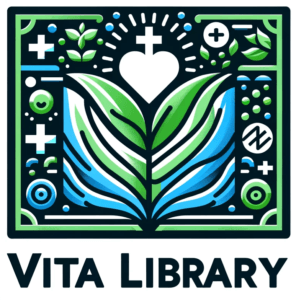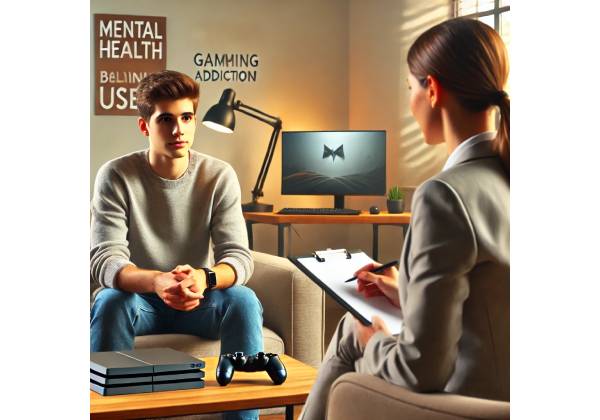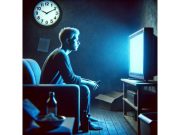Online games can be brilliant escapes, creative outlets, and social hubs—but they can also swallow entire weekends, derail careers, and strain families when play crosses the line into compulsion. Online gaming addiction—sometimes called gaming disorder—occurs when digital play becomes so dominant that it takes precedence over work, study, sleep, and real-world relationships. This comprehensive guide explores how widespread the problem is, why certain people and environments are more vulnerable, how to recognize early warning signs, and, most importantly, the practical steps that lead to genuine, lasting recovery.
Table of Contents
- The Rise and Scope of Excessive Play
- Why It Happens and Who’s at High Risk
- Behavioral Clues and Diagnostic Tools
- Ripple Effects on Body, Mind, and Social Life
- Evidence-Based Help and Sustainable Reset Strategies
- Common Questions Answered
The Rise and Scope of Excessive Play
A pastime turned global pastime—then public-health puzzle
In the early 2000s, online gaming meant laggy dial-up sessions in fantasy realms. A generation later, competitive esports arenas sell out stadiums, virtual reality headsets drop prices yearly, and mobile titles serve billions of micro-sessions on subway rides. Worldwide revenue from digital games now eclipses that of film and music combined, topping half a trillion US dollars in annual consumer spending. With that explosion of access and profit comes a steady uptick in stories of players who can’t log out.
How common is problematic gaming?
Population surveys differ by methodology, but a clear pattern emerges: roughly 1–3 percent of adults and 5–10 percent of adolescents exhibit behaviors meeting formal criteria for gaming disorder. Within esports athletes, university dorm residents, and MMO guild leaders, those figures climb even higher.
| Age Group | Prevalence Range | Key Observations |
|---|---|---|
| Children 8–12 | 4–8 % | Many excessive players gravitate to sandbox and battle-royale titles with endless progression. |
| Teens 13–18 | 6–11 % | Discord servers and livestream platforms add social pressure to stay online. |
| Young adults 19–29 | 3–7 % | Competitive ranking systems fuel marathon sessions to avoid de-ranking. |
| Adults 30+ | 1–3 % | Growth in mobile and casual genres blurs lines between “just a break” and a six-hour binge. |
Why online formats supercharge engagement
- Persistent worlds never pause—characters craft, trade, and level up even while players sleep.
- Randomized rewards (loot boxes, gacha pulls) mimic slot-machine dopamine spikes.
- Season passes and daily quests create artificial deadlines that punish logging off.
- Social integration—guild obligations, ranked ladders, and live chat—turn quitting into a perceived betrayal of teammates.
- Cross-platform ubiquity lets play jump seamlessly from console to phone, erasing natural stopping cues like leaving the house.
Economic and policy implications
Excessive gaming drains productivity, inflates healthcare costs tied to sedentary lifestyles, and sparks debates over loot-box gambling regulation. Several countries—including China, South Korea, and, more recently, parts of the EU—have enacted age-based playtime caps or micro-transaction restrictions to curb harm.
Why It Happens and Who’s at High Risk
Gaming addiction rarely stems from a single root. Instead, biological sensitivities, psychological needs, and environmental hooks weave together like overlapping quest lines.
Neurobiology of the “one more round” urge
- Enhanced dopamine response Brain-imaging studies show certain players release larger dopamine spikes when anticipating variable in-game rewards, reinforcing longer play.
- Genetic heritability Twin research estimates about 50 percent of vulnerability is inherited, paralleling patterns seen in substance use and gambling disorders.
- Delayed prefrontal maturation Adolescents possess developing executive functions, making impulse control shakier when confronted with instant rewards.
Psychological magnets
| Inner driver | Gaming payoff | Real-world alternative |
|---|---|---|
| Social anxiety | Interactions behind avatars feel safer than face-to-face meetings. | Gradual exposure: start small, like commenting in hobby groups or attending low-pressure meetups. |
| Stress & escape | Immersive worlds numb daily worries and deadlines. | Scheduled stress breaks: 15-minute mindfulness sessions or brisk walks between tasks. |
| Achievement hunger | Levelling up and leaderboard climbs offer clear metrics of success. | Set tangible offline goals—gym PRs, language-learning streaks, or DIY project milestones. |
| Perfectionism | Endless re-tries chase the flawless run or perfect KD ratio. | Adopt “good-enough” challenges: draw a daily sketch, not a polished masterpiece. |
Social, cultural, and market forces
- Free-to-play economics Low entry barriers pull enormous audiences; revenue then flows from a committed minority, incentivizing design that stretches session lengths.
- Streamer culture Celebrity gamers broadcast 8- to 12-hour marathons, modeling excessive play as aspirational lifestyle.
- Lockdown legacy Pandemic isolation drove millions to multiplayer titles for connection; many never recalibrated after restrictions lifted.
- Peer reinforcement Dropping out of a raid or ranked team mid-season risks ostracism—external pressure that blurs consent.
High-risk profiles at a glance
- Male teens who mix competitive FPS titles with a streak-based reward temperament.
- Females in social-sim communities (life-sim games, cozy MMOs) who log long hours due to relationship maintenance rather than competition.
- Neurodivergent individuals (ADHD, ASD) drawn to predictable game loops or hyper-focus on skill mastery.
- People with depression using games to self-medicate low mood or anhedonia.
- Shift workers whose irregular hours align with global servers, making real-world schedules fade.
Recognizing these layered risks helps players, parents, and clinicians focus prevention efforts where they matter most.
Behavioral Clues and Diagnostic Tools
Everyday signals that play might be spiraling
- Total absorption—Intending a 20-minute match and surfacing four hours later, shocked by the clock.
- Mood-dependent login—Feeling irritable until the controller or keyboard is in hand.
- Sneaky play—Hiding in the bathroom with a phone game during family dinners or work shifts.
- Loss of interest—Activities once enjoyed (sports, reading, social events) lose appeal compared with screen time.
- Failed cutbacks—Deleting a game, only to reinstall it or pivot to an alt account within days.
Physical and financial warning lights
| Warning light | What it often looks like |
|---|---|
| Sleep debt | Staying up till 3 a.m. to clear dailies, then drowsy driving to class or work. |
| Eye strain & headaches | Dry, red eyes and tension migraines from back-to-back matches. |
| Micro-transaction creep | Multiple €4.99 or \$1.99 charges that add up to a surprise triple-digit monthly bill. |
| Poor posture injuries | “Gamers’ neck,” carpal tunnel syndrome, and lower-back pain from marathon sessions. |
Formal diagnostic frameworks
- WHO ICD-11 Gaming Disorder—Characterized by impaired control, priority given to gaming over other interests, and continuation despite negative consequences, lasting 12 months or more.
- DSM-5-TR Internet Gaming Disorder (IGD)—Nine criteria (e.g., tolerance, withdrawal, loss of interest in other activities); meeting five signals a disorder.
- Assessment tools
- Internet Gaming Disorder Scale–Short-Form (IGDS9-SF)
- Gaming Addiction Identification Test (GAIT)
- Parent-Child Internet Gaming Disorder Checklist (for clinicians working with youth)
The evaluation journey
- Screening questionnaire in primary-care, school, or workplace wellness check.
- Clinical interview exploring emotions, motives, play patterns, and life impact.
- Collateral data—Logs of playtime, purchase histories, or feedback from family.
- Comorbidity mapping—Assess depression, ADHD, anxiety, and impulse-control disorders.
- Severity scoring & treatment planning—Mild cases may benefit from self-help; severe cases often need multi-modal therapy.
Ripple Effects on Body, Mind, and Social Life
Physiological strain
- Circadian disruption—Blue-light exposure into the night suppresses melatonin, rewiring sleep patterns and weakening immune defenses.
- Metabolic changes—Sedentary marathons slow calorie burn; many gamers snack on high-sugar drinks, fueling weight gain and insulin resistance.
- Repetitive-strain injuries—Thumb tendonitis, “trigger finger,” and nerve compression from high click-rates.
- Vision issues—Digital eye strain, blurred distance vision, and heightened risk of myopia progression in children.
Psychological and cognitive consequences
- Mood volatility Back-to-back losses spike cortisol and adrenaline, leading to anger or melancholy.
- Reduced academic/work performance Executive functioning—planning, prioritizing, working memory—suffers as mental bandwidth funnels into game stats.
- Social withdrawal Online squads replace in-person friendships, eroding empathy cues learned through body language and tone.
- Identity foreclosure Self-esteem becomes welded to in-game rank or avatar aesthetics, leaving real-world roles underdeveloped.
- Co-addictions Problematic gaming can coexist with energy-drink overuse, gambling on loot boxes, or even stimulant misuse to extend play.
Family, relationship, and community ripple effects
| Domain | Typical fallout | Example scenario |
|---|---|---|
| Romantic partnerships | Emotional neglect and unmet intimacy needs | Partner watches Netflix alone nightly while gamer grinds ranked ladder. |
| Parent-child bonds | Missed milestones and resentful tantrums during enforced log-offs | Dad says “One more raid” and skips bedtime stories again. |
| Financial stability | Secret credit-card debt from cosmetic skins and DLC bundles | Monthly statement reveals €600 in micro-purchases. |
| Legal issues | Unauthorized spending, especially by minors, triggers consumer-protection disputes | Child buys loot boxes on a parent’s saved card. |
| Community life | Less volunteerism, club turnout, and neighborhood engagement | Local sports league loses members to Saturday raid nights. |
Awareness of these multidimensional repercussions underscores why gaming disorder isn’t merely a “bad habit” but a complex health challenge demanding compassion and strategic support.
Evidence-Based Help and Sustainable Reset Strategies
Professional treatment toolkits
| Modality | What it involves | Best for… |
|---|---|---|
| Cognitive-Behavioral Therapy (CBT) | Identifying thought distortions (“I need to finish all quests today”) and creating balanced schedules | Most motivated clients, teens through adults |
| Dialectical Behavior Therapy (DBT) | Emotion-regulation skills, distress-tolerance drills, mindfulness practices | Gamers with mood swings or self-harm tendencies |
| Motivational Enhancement | Resolving ambivalence via guided self-reflection and personalized goal setting | Early-stage or “pre-contemplation” gamers |
| Group therapy | Peer insights, accountability, shared wins, and relapse-prevention planning | Clients who thrive on social learning |
| Pharmacotherapy | SSRIs for comorbid depression/anxiety, ADHD meds for focus regulation | When co-occurring disorders amplify gaming urges |
Peer-led and digital support channels
- Online support forums r/StopGaming, Game Quitters Discord, and other moderated spaces provide anonymity and 24/7 empathy.
- Twelve-step fellowships Internet & Tech Addicts Anonymous (ITAA) adapts classic steps to digital behaviors.
- In-game support bots Some MMOs now host NPCs that offer mental-health resources when players mention feeling “stuck” or “burned out.”
- Campus programs Universities increasingly run workshop series on healthy gaming and time management.
Practical DIY strategies you can start now
- Digital declutter Delete or mute push notifications for daily quests, store discounts, and event countdowns.
- Time-boxed play Use apps like Freedom or Cold Turkey to cap sessions to 90 minutes with enforced cool-downs.
- “Play then plan” ritual Log wins, losses, and emotions after each session to reinforce self-awareness.
- Physical reset cues When a timer rings, stand up, stretch, hydrate, and do 10 squats or push-ups—pattern interrupts build new habits.
- Reward replacement Swap the dopamine hit of loot boxes for mini-celebrations: walk outside, brew quality tea, or listen to a song you love.
Crafting a personalized relapse-prevention blueprint
- Trigger map Chart events, times, and moods that ramp up cravings; brainstorm at least two healthy replacements for each.
- Support squad Pick three people—friend, therapist, partner—who receive a quick SMS if an all-night binge feels imminent.
- Financial firewall Remove stored credit cards from gaming platforms; use prepaid cards with tight limits.
- Celebration calendar Mark 30-, 90-, and 180-day streaks of healthy play or abstinence; reward with offline adventures, not new DLC.
- Growth mindset mantra “Progress, not perfection.” Slips are data points to refine the plan, not proof of failure.
With layered, flexible strategies, most gamers can re-establish balance—transforming a pastime back into a fulfilling hobby rather than a life-defining anchor.
Common Questions Answered
What counts as online gaming addiction?
Online gaming addiction means you consistently prioritize games over responsibilities, relationships, and well-being, struggle to cut back, and keep playing despite negative fallout. The WHO classifies it as a disorder when these patterns last at least 12 months.
How many hours of gaming per day are too many?
There’s no universal cap, but if playtime crowds out sleep, work, study, or social obligations—and you feel distressed when trying to stop—that’s a red flag. Quality of life matters more than a strict hour limit.
Can gaming addiction affect physical health?
Yes. Chronic sleep loss, poor posture, eye strain, and weight gain are common. Extended sedentary time also raises cardiovascular and metabolic risks, particularly when combined with sugary drinks and snacks often consumed during sessions.
Is total abstinence the only solution?
Not always. Some people regain balance by setting strict schedules and turning off micro-transactions. Others need a clean break to reset behavior. The best path depends on severity, triggers, and personal goals.
Where can I get help right now?
Start with your primary-care doctor or a mental-health professional experienced in behavioral addictions. National helplines, ITAA meetings, and specialized online-therapy platforms offer immediate, confidential support.
Disclaimer
The information in this article is for educational purposes only and should not replace personalized advice from a qualified medical, psychological, or financial professional. Always consult an expert before making decisions about diagnosis, treatment, or lifestyle change.
If this guide helped you or someone you care about, please share it on Facebook, X (formerly Twitter), or any platform you love, and follow us for more evidence-based tips on mental health and digital well-being. Your support lets us keep creating high-quality resources—thank you!

















